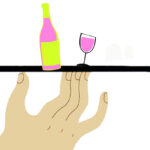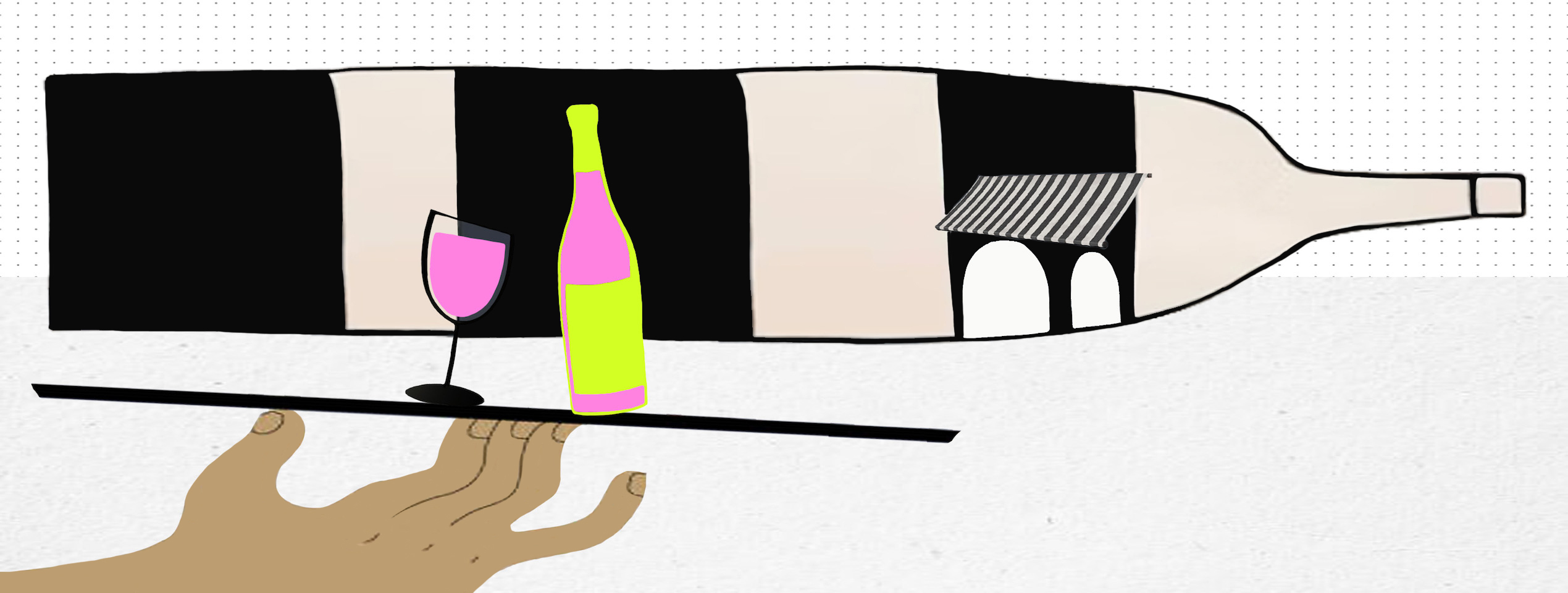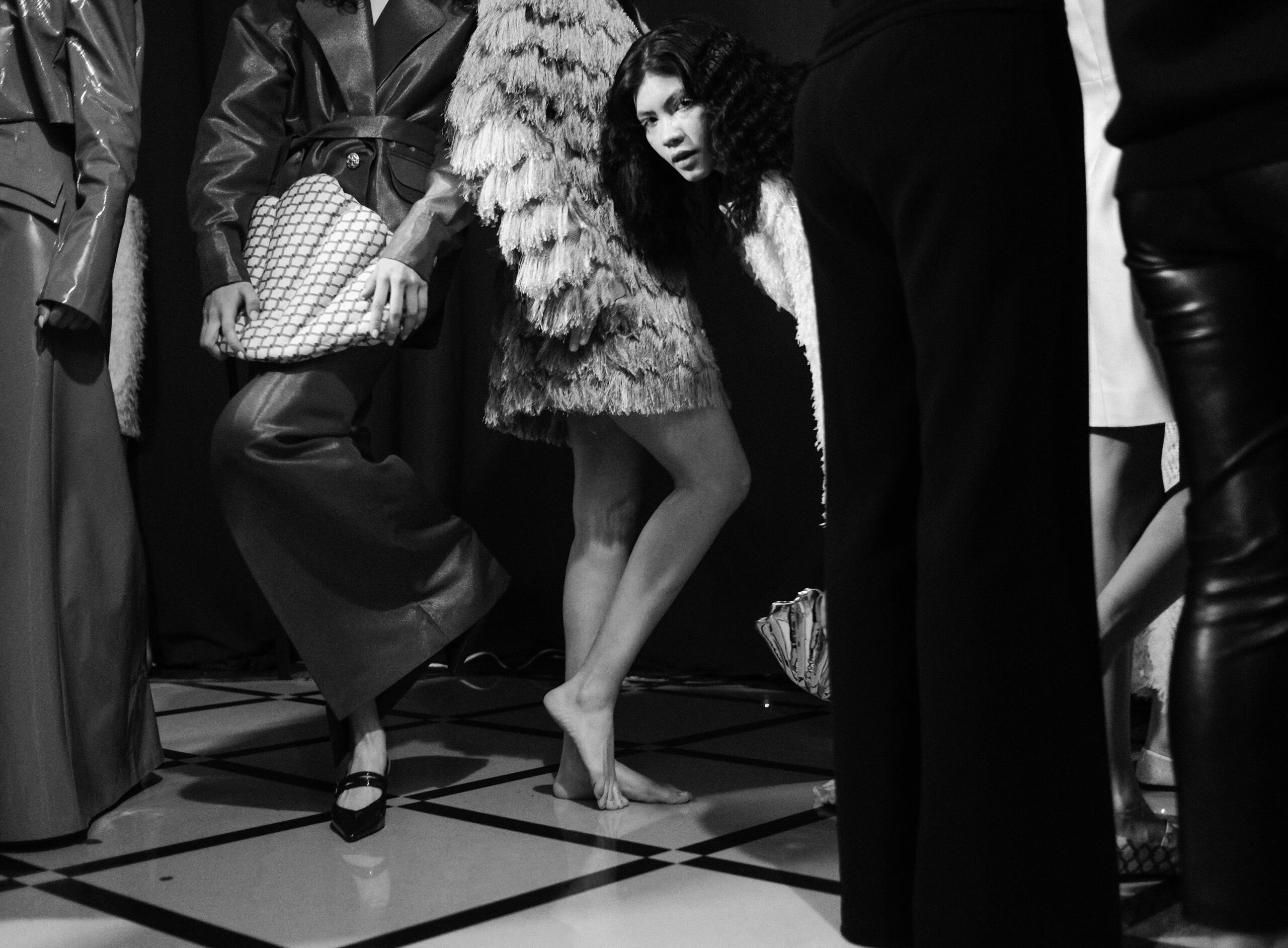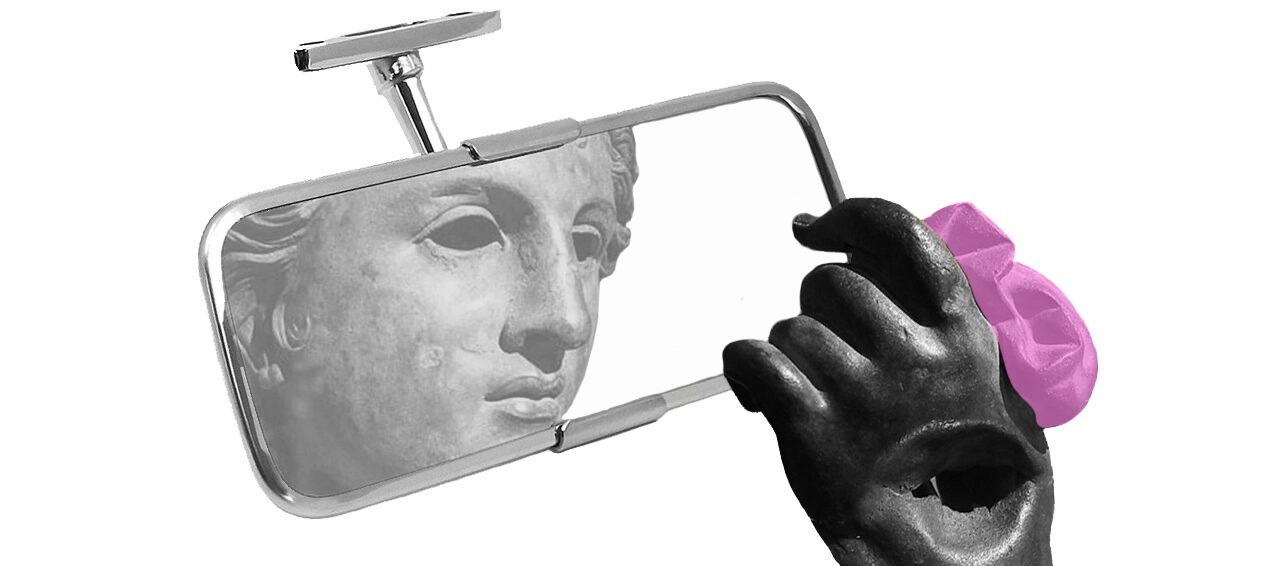“Everyone was saying, you’re crazy, you’re mad,” recalls Vahe Baloulian, leaning on a bar table at Tapastan—his fourth foray into Armenia’s hospitality scene. “They said, ‘It’s not going to work, nobody drinks wine in Armenia.’” But what seemed mad at the time was the beginning of a transformation no one saw coming. Baloulian is talking about In Vino, his first experiment on Saryan Street—an unpretentious wine bar that turned the quiet, overlooked part of Yerevan into a street synonymous with Armenia’s wine-making renaissance.
When In Vino arrived in 2012, it seemed like an unlikely match for the area. At the time, few people in Armenia were habitual wine drinkers, and not much existed on the unremarkable, kilometer-long road that skirts the western edge of Yerevan’s center. A post office, a museum devoted to the street’s namesake painter, a few computer repair stores, and little else. In Vino itself replaced a handbag store. After sunset, the area was poorly lit and quiet.
Today, the street is nothing like its former self. Restaurants, bars and cafes are packed shoulder to shoulder, seeming to multiply overnight. Some eateries vanished as quickly as they appeared. But it’s not without growing pains—construction logos drape over half-finished storefronts, and every block feels like a work-in-progress, as if the street’s renovation began 12 years ago and never ended.
More than a decade after taking a bet on Saryan, Baloulian and other business owners are now grappling with the street’s latest evolution. Known affectionately as “Wine street”, the name no longer seems to fit. Only a handful of businesses have survived the past decade, a select few of them dedicated to wine. Apart from those, one of the last significant ties to wine is the annual festival taking place on Saryan. Just this month, a restaurant, two bakeries, and a pub have shut their doors. Meanwhile, a handful of hookah lounges have claimed the street’s expensive real estate, with their neon-lit facades and clouds of sweet smoke setting the tone for the street’s new nightlife. For those who shaped Saryan’s early days, the second transformation seems unfinished, as if the street is still figuring out what it wants to be.
One of the most quietly influential figures behind Saryan Street’s initial transformation is not a typical restaurateur. Baloulian, who graduated as a radio engineer, had always dreamed of directing films at a young age. But his move to the United States led him along a different path. A talk show host in Los Angeles turned book publisher, he eventually launched Narek.com in 1997, which he playfully dubs the “Armenian Amazon”, selling books, souvenirs and local goods. In Armenia, he headed SoftConstruct’s operations globally—one of the country’s largest IT firms. Even after opening In Vino, he could be found washing glasses and wiping tables after hours, behavior that he says his tech employees found odd.

The hands-on approach had carried over from his earlier ventures. Baloulian and his partners opened their first restaurant in 2004, an unassuming spot called The Club on Tumanyan Street, where he still personally replies to customers on TripAdvisor. They had imagined a place with a wine-centric approach to dining, but quickly realized that Armenian wines tended to be inconsistent with their quality. Local winemakers encouraged them to take matters into their own hands by producing their own wine—leading to the start of Trinity Canyon Vineyards. But Baloulian, who had spent time living around Europe, still felt like something was missing in Yerevan’s hospitality scene. “I liked to go to wine bars, and have a drink without having to eat a major meal,” he says. “So I said, I want to open one here with whatever drinkable wines are in Armenia.” And so began In Vino.
Saryan Street owes its transformation more to chance rather than intention. The bar might have opened in a different corner of Yerevan altogether. Baloulian was close to signing a lease on Teryan Street, but backed out when he discovered that the landlords couldn’t legally rent out the space. His only connection to Saryan Street was that his father had gone to school nearby and he still remains modest about his hand in changing the fabric of these few blocks of the city.
“I’m not a visionary,” Baloulian insists. “I didn’t imagine anything.” To him, it was much simpler than that—even “egoistic”, in his words. “I just wanted a small place where you could go and drink wine.”
The opening of the wine bar coincided with Armenians rediscovering their links to an ancient tradition of winemaking. Just one year earlier, at the Areni-1 cave, archaeologists had uncovered a several thousand year-old wine press, storage vessels and cups alongside the remnants of grape skins and seeds. The find sowed even more momentum into a winemaking revival that was already underway. People were beginning to make wine again, but there was no place to drink it, taste it or understand it, without having a meal, too, Baloulian says.
For years, vodka was (and still is) the drink of choice for many. But Baloulian believes wine is the more “social” drink. “When you take your girlfriend out and want to propose, what do you put on the table?” he asks. “You take a shot, and then throw it away and say, let’s get married? Or do you order champagne and say, will you marry me?”
When In Vino opened, it only had two modest shelves of Armenian wine. Now, there are two full floor-to-ceiling blocks, says Baloulian, housing 200 Armenian varieties out of the approximately 1,500 international wines stocked there. But Baloulian is reluctant for In Vino to claim credit as the catalyst for the wine renaissance, but “it had a lot to do with it, I won’t deny it,” he concedes.
Without a place to drink wine, there would be no industry, he says. Here, wine connects people. The place feels a little more honest than other bars in Yerevan, exuding a sense of immediacy that’s often missing elsewhere. Baloulian calls it “democratic”—a place where you can be yourself without the pressure to dress up and show off. The tables squeezed together outside also don’t leave much room for a private conversation, but in that close proximity, people meet and friendships are formed. Now run by Mariam Saghatelyan, a partner in the business from the start, In Vino filled a need nobody really knew existed. “Before, you wouldn’t find a place where you would be squeezed in next to each other with people you don’t know, it would be unthinkable,” Baloulian says. “No way, no way.”
While In Vino was the first sign of change on Saryan Street, Baloulian credits his next venture, Tapastan, as the real turning point. He had heard that a shawarma vendor was considering the space once left empty by a medical clinic next door. “I have nothing against fast food,” he says. “But it didn’t fit.” They took the space with plans for a restaurant, but their neighbors at the time didn’t allow them to build a kitchen there. Then, when a computer shop two doors down went out of business, they took that opportunity instead. “After In vino opened, for years, nobody did anything,” Baloulian says. “People were still not sure.” But with Tapastan’s arrival, other proprietors began to see the area’s potential. Baloulian himself opened a third spot, a zero-waste steak restaurant, on the same strip, veering away from wine as a main focus.
One by one, other restaurants and bars began to fill up the street. First, on the In Vino side, and then the other. But the rapid turnover of these businesses reflects a “whatever works” attitude that still continues to shape the neighborhood and Yerevan more broadly—test a concept, see if it catches on, and if not, move on quickly. Yerevan’s hospitality scene is a place of experimentation, and ideas are often imitated before they’ve had a chance to fully mature. Copycats follow where they see success. Just steps from In Vino, another wine bar opened a few years later offering wine by the glass for 100 dram less. But Baloulian points out where they might have gone wrong: “You have to be genuinely interested in selling your wine and introducing it to people,” he says. The bar didn’t last long.
However, not every failed business falls into the “copycat” category, closing their doors because of a lack of genuine passion. Some, like Gurgen Margaryan’s Process—an electronic music bar that evolved into a jazz club and music venue on Saryan 1—carved out a distinct cultural niche. Though it remained a somewhat hidden establishment, known mainly to a devoted circle, Process had become a fixture on the street since opening in 2012. Yet even this spot couldn’t survive the rapid changes—particularly the rent, which doubled in just a few years. “Then everything else got expensive, too,” Margaryan says. “The alcohol, everything.”
Margaryan describes In Vino as having the most “radiating” impact on the street. Process, on the other hand, was never designed to draw a crowd. Instead, Margaryan envisioned the space as a haven for a diverse group—a place for music, conversation and community. But even Process couldn’t outlast the street’s rapid evolution, closing just three months ago. “Saryan used to be more beautiful than it is now,” Margaryan recalls. “It’s still beautiful now, but it has been better before.” His friend Gagik, sitting beside him, nods in agreement. Having grown up in the area and still living just around the corner, Gagik keeps his own rituals tied to the street, never skipping a morning coffee here before driving to Dilijan for work. The pair are sitting outside at Ground Zero, one of the street’s pioneering cafes and a mutual favorite. Now, it’s one of at least ten cafes on the same strip—a testament to the street’s transformation, for better or for worse.
The proliferation of businesses here hasn’t only reshaped facades, but also changed the experience of those living above, too. Some of whom never signed up for their neighborhood reinvention. Margaryan remembers the challenges of running a bar in the middle of such change—like the woman who hurled pears at bar-goers from her window above Process. “Even when we didn’t have music, she used to call the police,” he says. When she got a green card and moved away, “we celebrated”.
But for others, the change has brought something positive. House prices have risen in value for living in proximity to such a lively street. Even staff at the Saryan Museum, likely the street’s longest-standing fixture, see the change as a net positive. With the street’s facades now strikingly different to Saryan’s own leafy renditions contained in the museum, the staff said that the change attracted more visitors. In some ways, the street’s transformation magnified the popularity of Saryan himself. Even public art, like the recreation of a famous Saryan painting on the staircase to Demirchyan Street, has become part of the area’s identity—a display that might never have existed without the surge in foot traffic and attention that the street now commands.

“The city evolves on its own, we didn’t come to turn it into this,” Baloulian says. “We weren’t commissioned to turn this into a restaurant district, we just opened a small wine bar, and after that, it’s been very organic growth.”
Where this growth is heading isn’t exactly clear. There doesn’t appear to be any method behind which businesses set up shop next. “It can still be called wine street because the wine bars here are busy, working places,” Margaryan says. “But there’s a big danger because the rent is very expensive, there are businesses that are not keeping up.” Thinking of the fate of his own bar, “I hope that doesn’t happen to businesses that are contributing to this wine street atmosphere,” he says.
Margaryan is hesitant to criticize others finding success, but emphasizes what’s at stake: “If there are places that open that don’t adhere to the music, wine culture of the street, there is that danger that it won’t exist anymore,” he says. “I think it’s better that there be wine houses, jazz clubs, coffee houses, and not hookah bars.”
Lighting a cigarette, Margaryan walks over to the staircase leading to the basement where Process used to be. Above it, a restaurant with chandeliers and crystal accents catering to the street’s growing crowd of luxury-seekers. Below, the space has become Afro Club. “If I’m honest,” Margaryan says, reflecting on the closure,“three months have passed, I’m going to the gym, I’m sleeping at night, I have less stress now that neighbors aren’t calling.” The painted peace sign that once marked Process’ door is gone, but a faint outline of its signage still remains on the wall. A few days later, even that hint of the past is erased by a large red phone number—a sign that the space is already seeking its next tenant.
What began as a modest transformation has now sprawled into a patchwork of businesses, each trying to claim a piece of Saryan street. Towards the end of the interview at Tapastan, the music stops abruptly and the lights turn off. “This street wasn’t built for restaurants, in fact, the whole city wasn’t built for restaurants,” Baloulian remarks, after the restaurant’s backup electricity failed to kick in. “But people keep adding and adding and adding big equipment, trying to be sophisticated.”
For Baloulian, the charm of small spaces is their simplicity. “They don’t need much,” he says. “One stove and they just cook.” Baloulian’s own approach is a different kind of simplicity—bar stools forged from crowbars, table tops crafted from repurposed wine boxes from a champagne warehouse in France, and tiles salvaged from the ErAZ factory, which once made Armenia’s version of the Combi van. Whether these characteristic quirks inspire others is uncertain. Here, where businesses are increasingly supported by deep pockets or established conglomerates, the era of small, independent ventures that made Saryan Street what it was, may be coming to an end.
But sometimes, these different groups aren’t so distinct. “Some people like wine and they come and say, can I bring a hookah?” Baloulian laughs, adding that he doesn’t have anything against hookah, but that each street should keep its own distinct personality. “This street is not finding its face, it’s supposed to be one street, but it didn’t become one street.”
In many ways, Saryan Street mimics Yerevan’s own tendency toward reinvention. The constant rotation of new ideas, and copycats of existing ones, might seem like progress, but also risks chipping away at the essence of what made a place attractive in the first place. If In Vino were to close its doors tomorrow, how would the street fare then? A litmus test of impact is to take someone, or something, out of your life and ask, “would anything change?” Baloulian says.
“I think it would change,” he says. “It would somehow… something would change.”
Now, the street is in the midst of a third transformation with the flavors of coffee and hookah, one that is not convincing to long-time lovers of the street. What is gained—and lost—in this latest iteration?









